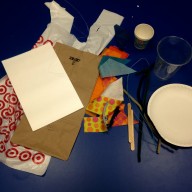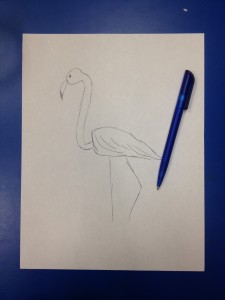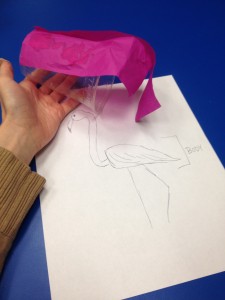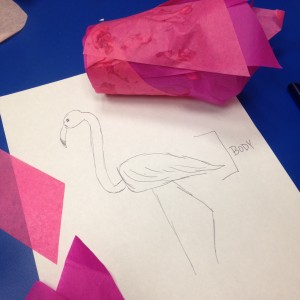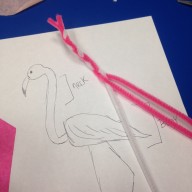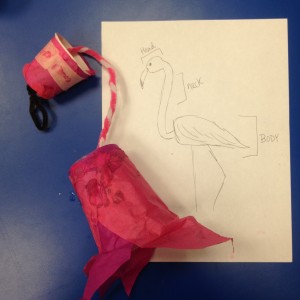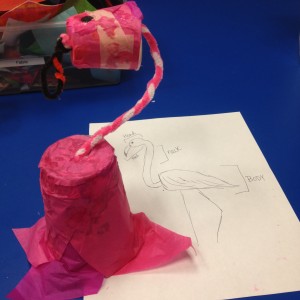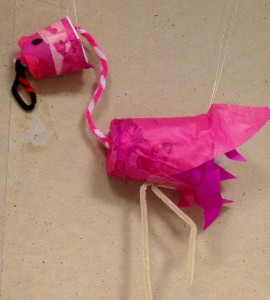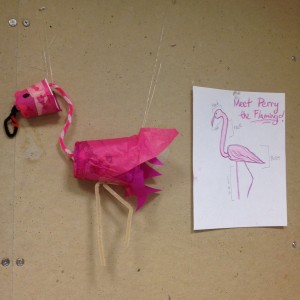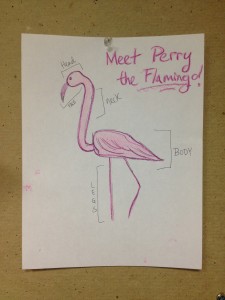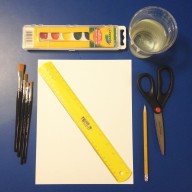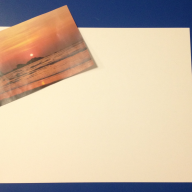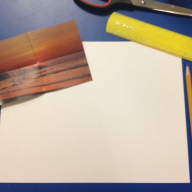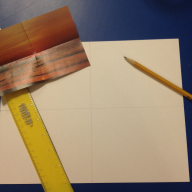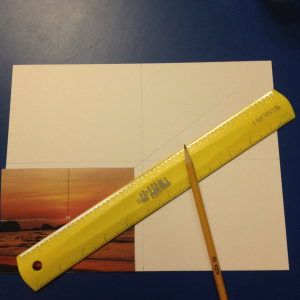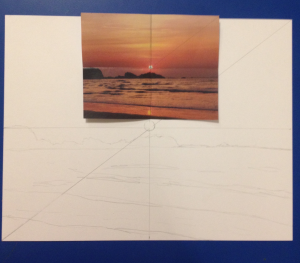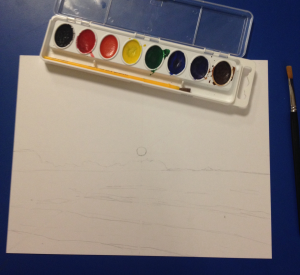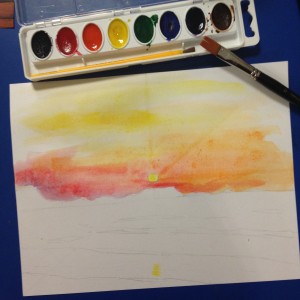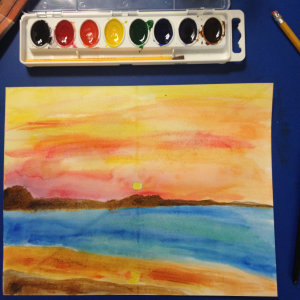A letter from Georgia O’Keeffe to Marjorie Phillips, wife of Duncan Phillips and a painter in her own right, has a postscript that reads, “It was so good to see you here in what I call ‘my good world.'” Dated 1975, this letter reveals that Marjorie Phillips visited O’Keeffe in her New Mexico home, a previously undocumented journey. In 1949, O’Keeffe paid tribute to the long friendship between her husband, Alfred Stieglitz, and Duncan Phillips by willing a series of Stieglitz’s photographs to The Phillips Collection. The 19 photographs, called the Equivalents, feature views of cloud-filled skies. Stieglitz’s goal was to evoke an emotional state through each image. By not including any reference points, including the horizon line, Stieglitz allowed viewers to focus on the abstract qualities of the cloud formations.
Tag Archives: Marjorie Phillips
Phillips-at-Home Summer Series #5: Reduce, Reuse, Create!
Our fifth project of the Phillips-at-Home Summer Series features the artist Alexander Calder and his work Only, Only Bird. For this art activity, you are going to create a suspending bird sculpture out of reusable materials. What is a suspending sculpture? A suspending sculpture is a piece of artwork that can be viewed from any angle and is usually hung from a ceiling.
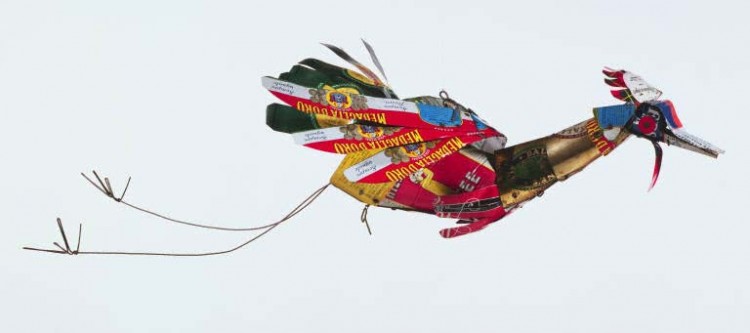
Alexander Calder, Only, Only Bird, 1951, Tin cans and wire 11 x 17 x 39 in.; Acquired 1966; © 2008 Estate of Alexander Calder/Artists Rights Society (ARS); The Phillips Collection, Washington, D.C.
Look closely: What do you notice in this sculpture? Why do you think Calder used tin cans to create his bird sculpture? What is the significance of the reusable materials? What kind of bird would you create out of reusable materials?
About the Artist: Alexander Calder was born in 1898 in Lawnton, PA. He graduated from the Stevens Institute of Technology in 1919 with a degree in mechanical engineering and held several jobs before he went to the Art Students League of New York in 1923. Calder is best known for his work with kinetic sculpture, especially mobiles. His work was exhibited in several large retrospectives, including the Solomon R. Guggenheim Museum, New York: the Musée National d’Art Moderne, Paris; the Museum of Contemporary Art, Chicago; and the Whitney Museum of American Art, New York. Calder passed away in New York on November 11, 1976, soon after the opening of his last retrospective, which he installed himself.
Marjorie Phillips had seen a photograph of the Only, Only Bird and desired it for her 1966 exhibition, Birds in Contemporary Art. She not only published it on the cover of the catalogue, but also purchased it for the permanent collection. Marjorie admired Calder’s work, stating that “in bird sculpture, more imaginative daring conceptions and materials have been used than in any previous age. Calder’s most delightful vigorous ‘Only, Only Bird’ is developed from a tin can.”
WHAT YOU NEED:
- Possible reusable (clean) items: plastic water/soda bottles, paper towel holders, tissue boxes, cups, plates, newspapers, magazines, chenille stems, beads, or anything else that you find to be reusable
- Clear wire/fishing line
- Glue
- Pen
- 8.5” x 11” white paper
- Tissue or construction paper
- Tape
- Scissors
SUGGESTED AGE:
- Ages 8 and Up
TIME FRAME:
- 4 hours
STEPS:
1. What bird do you wish to create a sculpture of? Find a photograph of your bird. Do a quick pen sketch using the photograph to help you draw it. I chose a flamingo.
2. Now, think about what reusable materials you could use to create your bird. Every bird is going to need different materials because every bird is unique.
3. You will create the main body of your bird first. I used a large cup as my base and layered it by gluing tissue paper to resemble feathers. You could use newspaper or magazine strips to resemble feathers as well.
4. Then, think about what your neck will be made out of. I decided to braid chenille stems. I poked a hole in the cup in order to attach the neck to the body.
5. Don’t forget the head! I chose a smaller cup to use for the head, using the same technique of layering tissue paper. Poke another hole to attach the other end of the neck.
6. Add features to detail your bird’s face. Think about what you want the eyes and beak to look like. I chose to use chenille stems. Remember you can use whatever materials fits your bird’s needs.
7. For the legs, I chose to attach chenille stems to the bottom of my main cup body with tape. Every bird is different so it depends on the size of your bird’s legs.
8. Finally, add any other features with your reusable materials that might be special to your bird.
9. Attach the clear wire to the neck and body in order for it to suspend correctly. I created a loop around the neck and then taped a loop on the inside of the main cup body.
10. Give your bird a name! Say Hello to Perry the Flamingo. Also, feel free to color in your original sketch with crayons if you would like to.
Tune in regularly for more art activities inspired by artwork in The Phillips Collection.
Julia Kron, K12 Education Intern
Phillips-at-Home Summer Series #4: Summertime
This installment of the Phillips-at-Home Summer Series features the artist Marjorie Phillips and her work Night Baseball. For this art activity, you are going to create a watercolor painting of your favorite summertime scene.
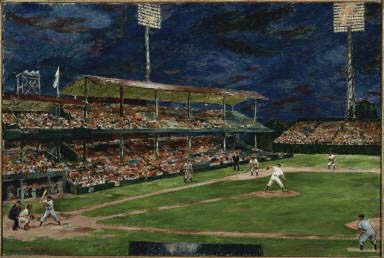
Marjorie Phillips, Night Baseball, 1951, Oil on canvas, 24 1/4 x 36 in., Gift of the artist, 1951 or 1952, The Phillips Collection, Washington, D.C.
Look closely: What is happening in this painting? Duncan Phillips introduced his wife, Marjorie, to the world of baseball after they got married. What do you like to do during the summer? What kind of summer activity would you turn into a painting?
About the artist: Marjorie Acker Phillips was founder Duncan Phillips’s wife and his partner in developing The Phillips Collection. She was born on October 25, 1894 and began drawing at the age of five. By 1918, she was commuting from her family home in upstate New York to New York City to take classes at the Art Students League. She met Duncan Phillips in 1920 during the Century Club exhibition of his collection. Marjorie felt that she and Duncan were kindred spirits and they were married in 1921. She became associate director of the new Phillips Memorial Art Gallery in 1925, and stayed in that position for the next 41 years. During this time she was an active painter while being Duncan’s partner in selecting works of art for the museum. When Duncan passed away in 1966, Marjorie became the director of the Phillips. She passed away in Washington, D.C. in 1985. The Phillips Collection has 60 oil paintings and 2 watercolors by her.
- 8.5″ x 11″ Cardstock
- 4 1/4″ x 5 1/2″ Picture of your favorite summertime scene
- Ruler
- Pencil
- Watercolor set
- Watercolor brushes
- Cup of water
- Paper towels
SUGGESTED AGE:
- Ages 8 and up
TIME FRAME:
- 4 hours
STEPS:
1. Print out a picture of a scene from your favorite summertime activity.
2. Cut out the picture and fold in half one way, then the other way to create a 4-square grid on your cardstock paper. Make a dash at 4 1/4″ on the 8″ sides. Make a dash at 5 1/2″ on the 11″ sides. Connect the lines to make a grid. These will be your reference lines.
3. Place the picture in the corner of your paper and place your ruler from corner to corner on your picture. Draw a diagonal line through the center of your grid. Continue the diagonal line where the picture was placed.
4. Now, you have a better idea of where things are placed in your picture. Begin to lightly draw what is in your picture by using your laid-out grid as reference.
5. Once you have drawn your picture, erase your reference lines and set out your watercolor set, brushes, cup of water, and paper towels. Begin to paint your picture; the amount of water you use relates to how bright your colors will be. More water = lighter colors, less water = brighter colors.
6. Feel free to keep adding to your watercolor as it dries. You can even add detailed lines with a pen. Once you are happy with your painting, give yourself a pat on the back because you just created a beautiful piece of artwork.
Tune in regularly for more art activities inspired by artwork in The Phillips Collection.
Julia Kron, K12 Education Intern


